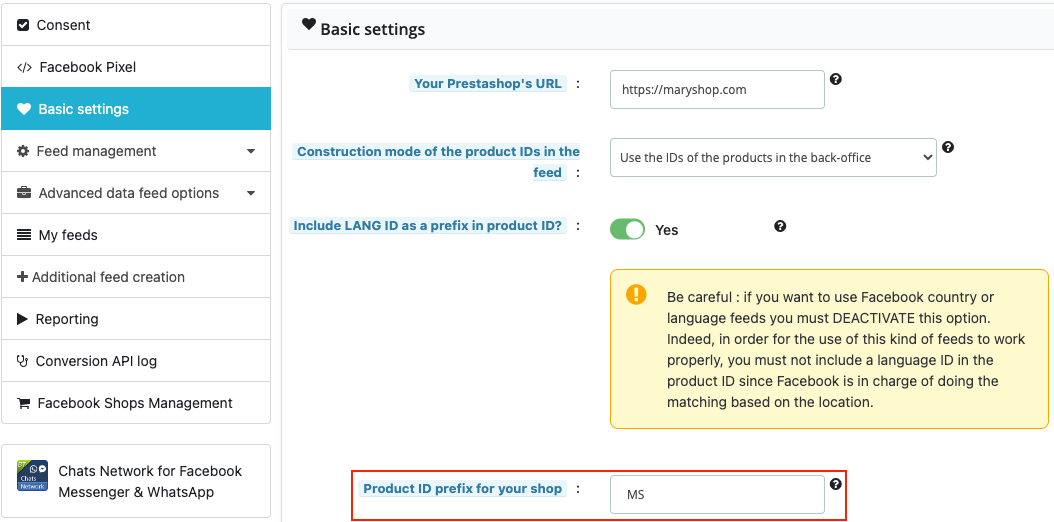What is the purpose of assigning a "shop" prefix to product IDs?
In the "Basic settings" tab of your module, if you choose to use product IDs in the back-office to build your feed IDs, you have the possibility to indicate a "shop" prefix:

This prefix is not obligatory but it must be useful and here is why:
If you complete this prefix and you select "Yes" to include the language information(*) in the product IDs, in your data feed XML file, the module will build for each of your products a unique identifier (ID):
For example : MSEN1v1
This ID is like the "fingerprint" of your product and it allows the product to be uniquely identified.
It's made up of a prefix, a language code (for example EN for English), a numeral code (1, 2, 3, 4, etc...) that matches the product ID in your PrestaShop back office and, if you chose to export each product combination as a single product, you will also have a code that indicates the combination.
To make this ID, the module will automatically fetch the numeral code, the combination code and, if you checked YES, it will retrieve the information about the language(*). But, you have to indicate a prefix, that could be for example your shop name's initials and that will be the same for all your products. This will provide an unique way to identify your products that will be exported with our module in your Facebook Business Manager account. This may be very useful for tracking the origin of the products, especially if you manage several different shops : by including a different prefix for each shop you will know from which shop a product comes from. This gives you an additional filter option.
The name you choose for the prefix isn't important but we advise you to put your shop's name's initials. For example, if your shop's name is "Mary's shop", you can choose to write "MS". 2 or 3 characters are enought.
(*)Note: in a same way, it's recommended to include the information about the language in the product ID, except in specific cases such as the use of country feeds. For more information, click here.
Other FAQs in this category
- How to send quality images to Facebook?
- What is the product GTIN code for?
- How to indicate the availability of my products on Facebook?
- What is the product condition?
- What are Facebook's product data guidelines?
- What are Facebook's requirements for shipping weights?
- What are the guidelines for product titles?
- What are the price guidelines to follow?
- Do I have to provide the brand of my products in my feed?
- Do I have to provide product colors in the feed?
- Do I have to include product sizes in the feed?
- What are the Facebook's requirements for product description?
- Is it necessary to indicate an age group for using my products?
- Do I have to indicate the gender for which my products are made?
- Do I have to provide information about my product patterns?
- Do I have to provide information about my product material?
- What is the product supplier reference (MPN code) for?
- What is the "product type" attribute?